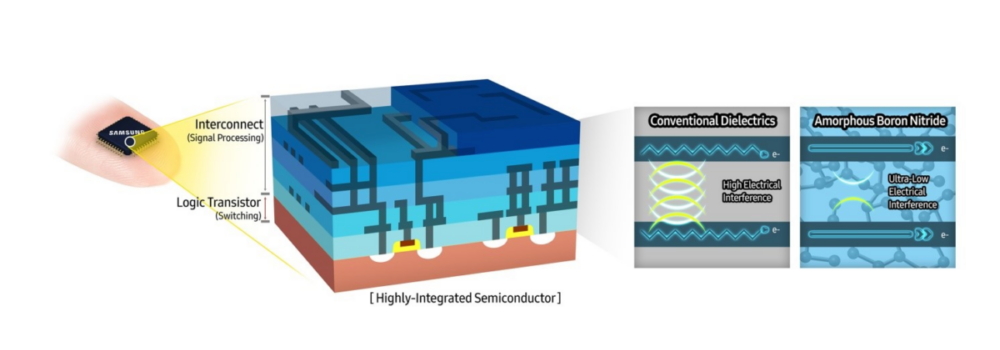The team at Samsung Advanced Institute of Technology (SAIT) has announced the discovery of new material — amorphous boron nitride (a-BN), in collaboration with Ulsan National Institute of Science and Technology (UNIST) and the University of Cambridge.
The South Korean giant claims that it has the potential to accelerate the advent of the next generation of semiconductors. The amorphous boron nitride (a-BN) consists of boron and nitrogen atoms with an amorphous molecule structure.

EDITOR’S PICK: Foldable smartphones to keep using UTG, CPI for the next 5 years: UBI Research
While amorphous boron nitride is derived from white graphene, which includes boron and nitrogen atoms arranged in a hexagonal structure, the molecular structure of a-BN makes it uniquely distinctive from white graphene, says Samsung.
Amorphous boron nitride has a best-in-class ultra-low dielectric constant of 1.78 with strong electrical and mechanical properties and can be used as an interconnect isolation material to minimize electrical interference.
The material can also be grown on a wafer-scale at a low temperature of just 400°C. And thus, this newly discovered material is expected to be widely applied to semiconductors such as DRAM, NAND solutions, next-generation memory solutions for large-scale servers.
Samsung Advanced Institute of Technology (SAIT) has been working on the research and development of two-dimensional (2D) materials – crystalline materials with a single layer of atoms. It has been working on the research and development of graphene and has achieved groundbreaking research outcomes in this area. SAIT has been working to accelerate the material’s commercialization.
UP NEXT: More than 50% of smartphones to use USB-C interface this year: Omdia







